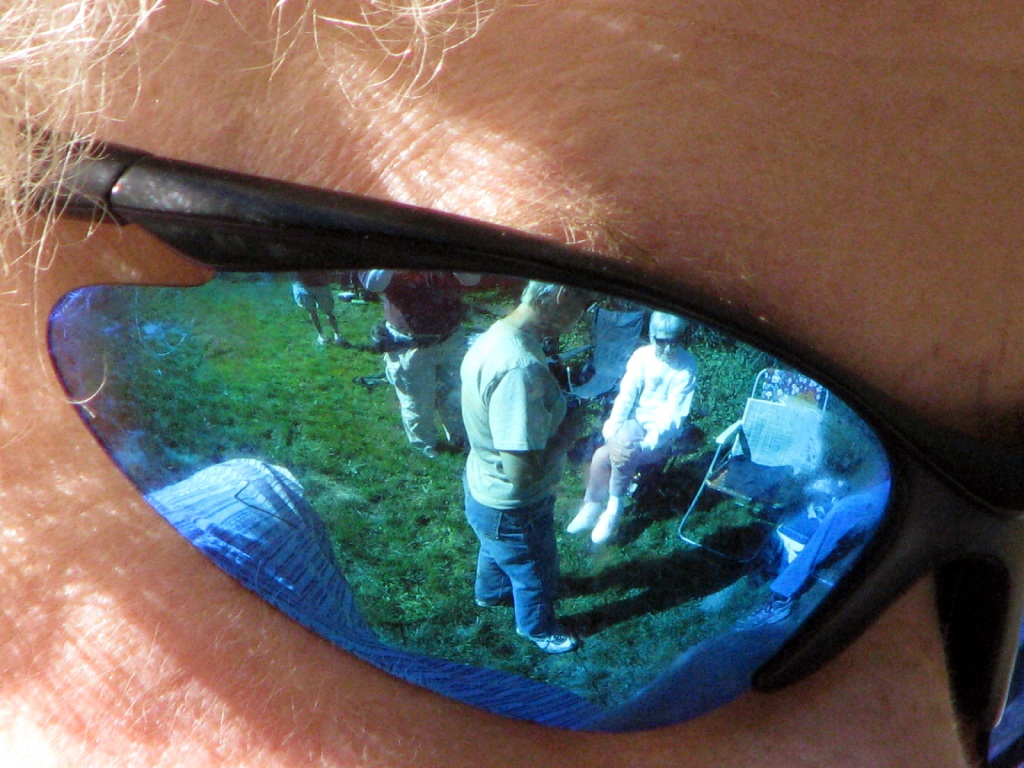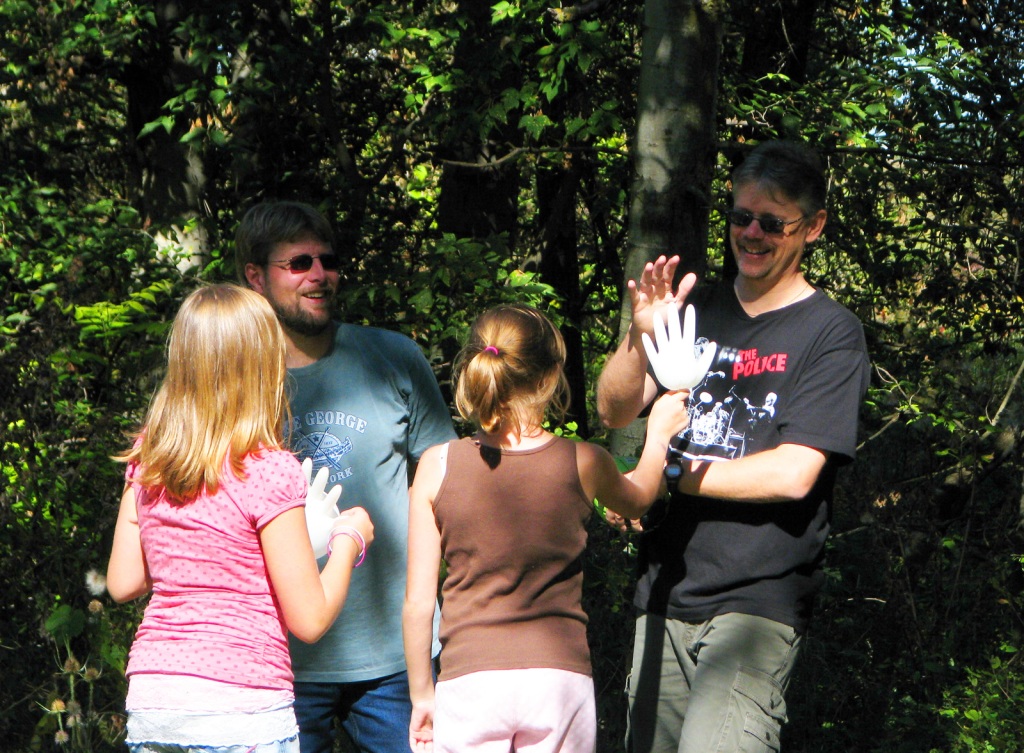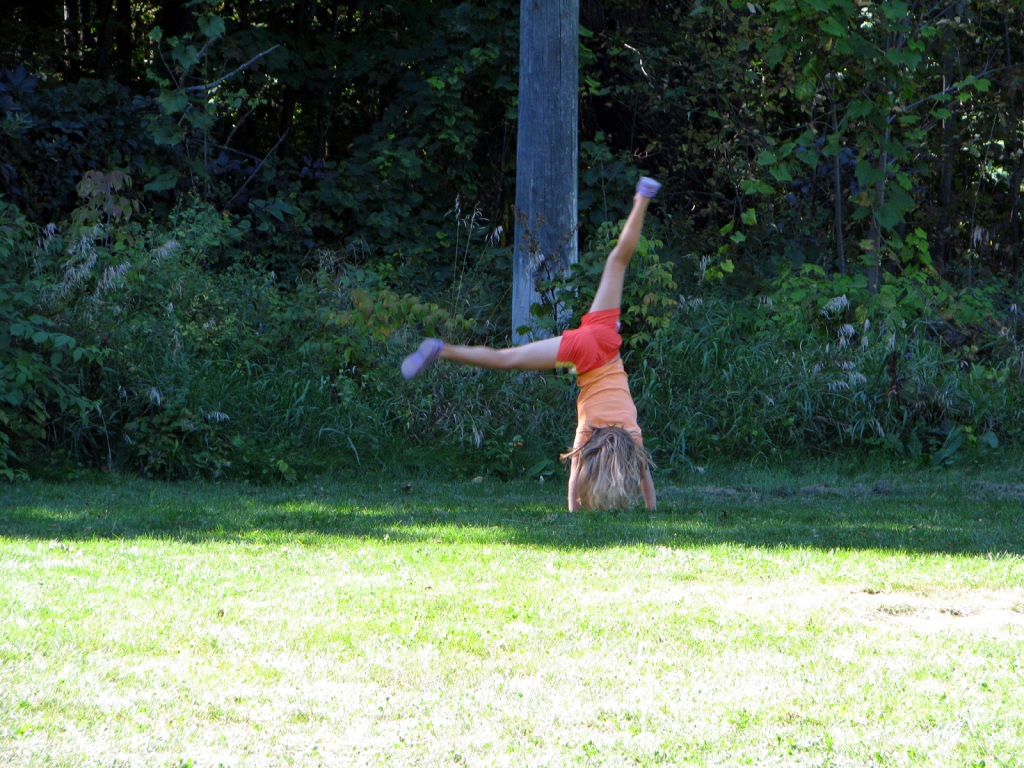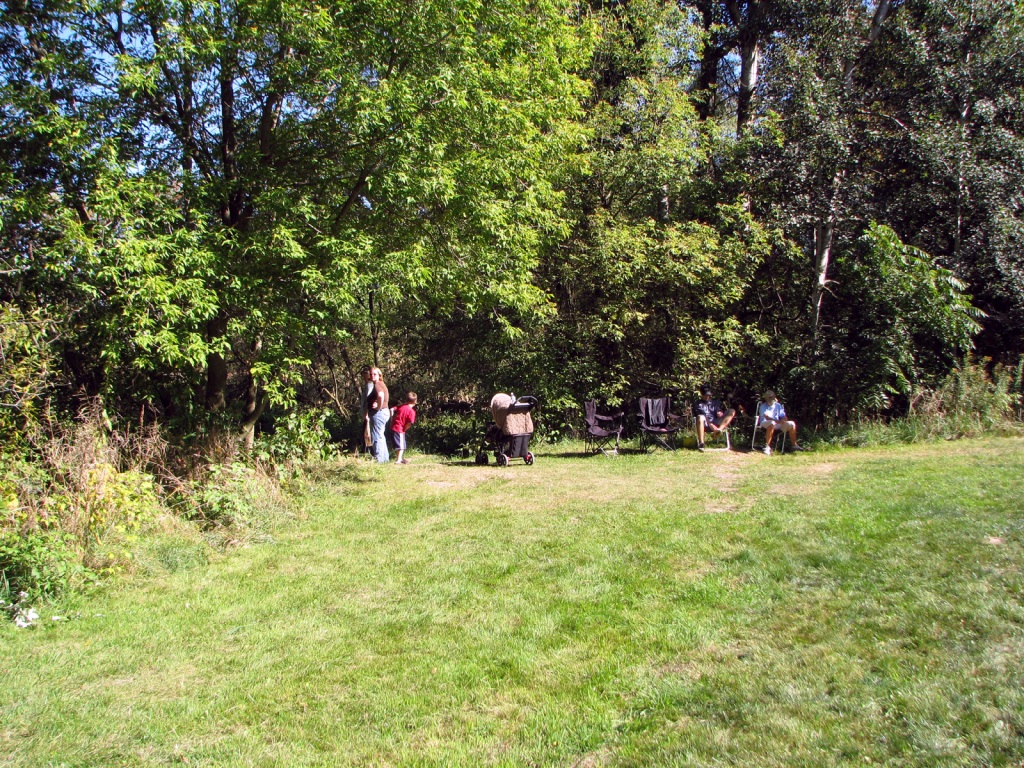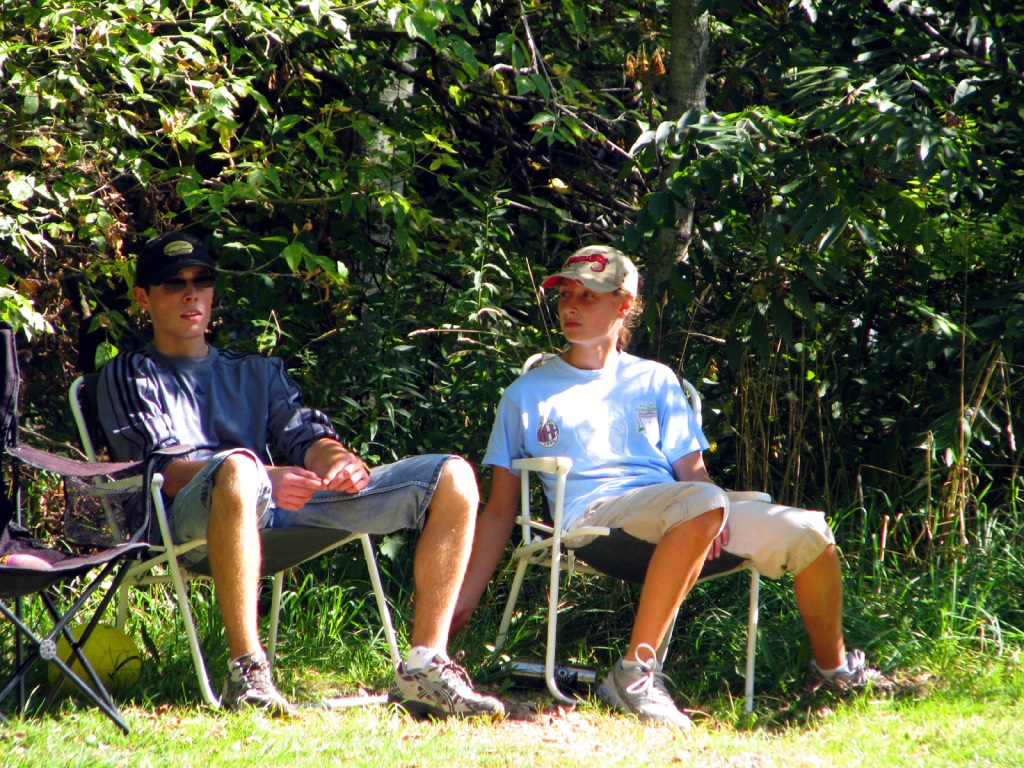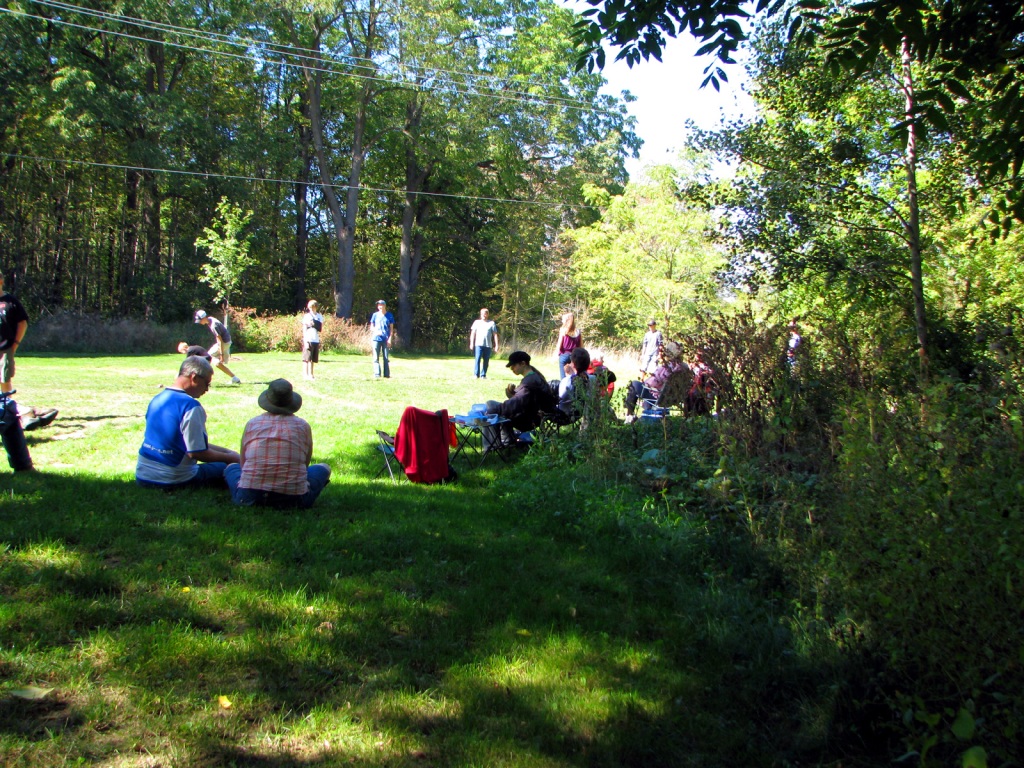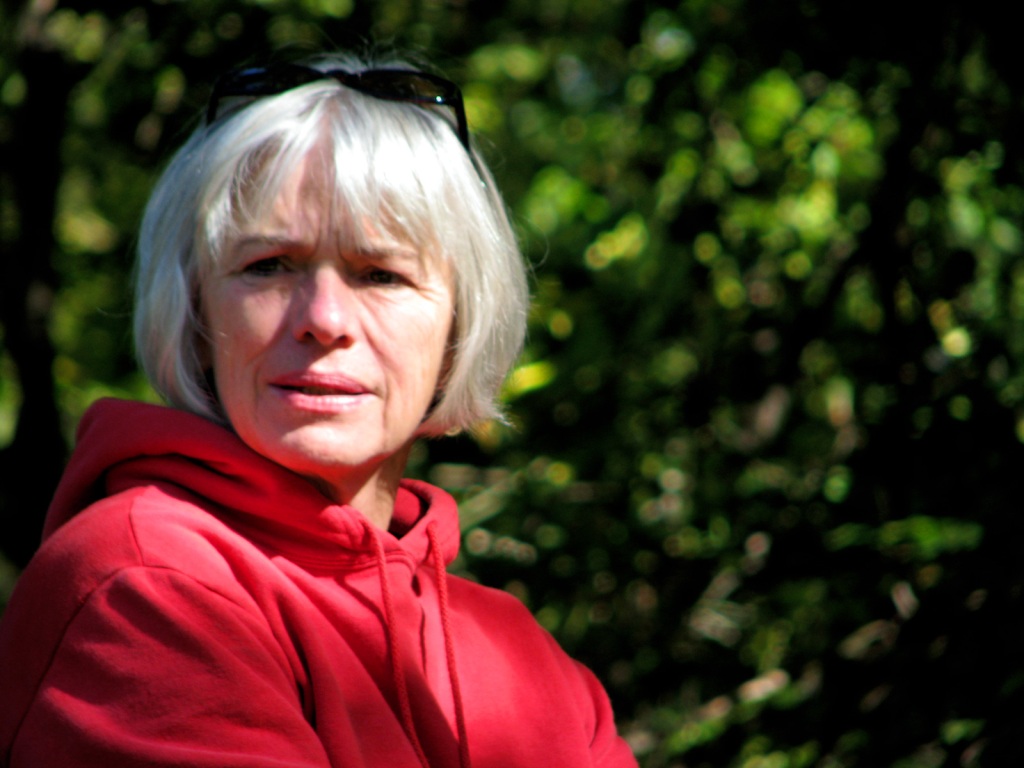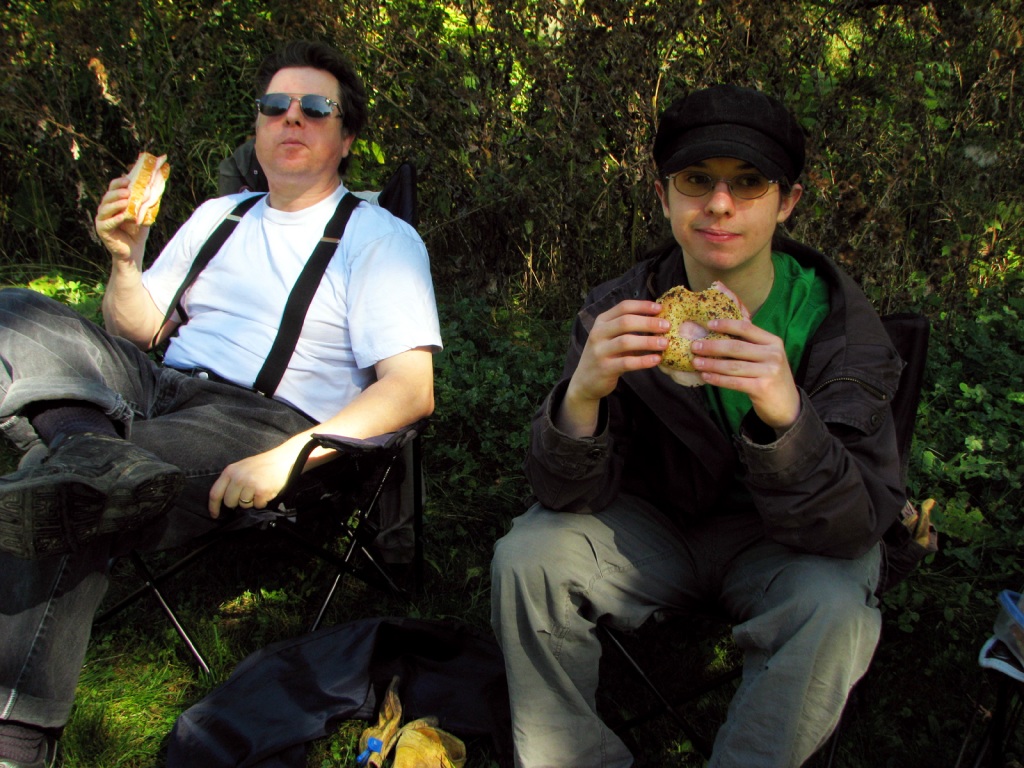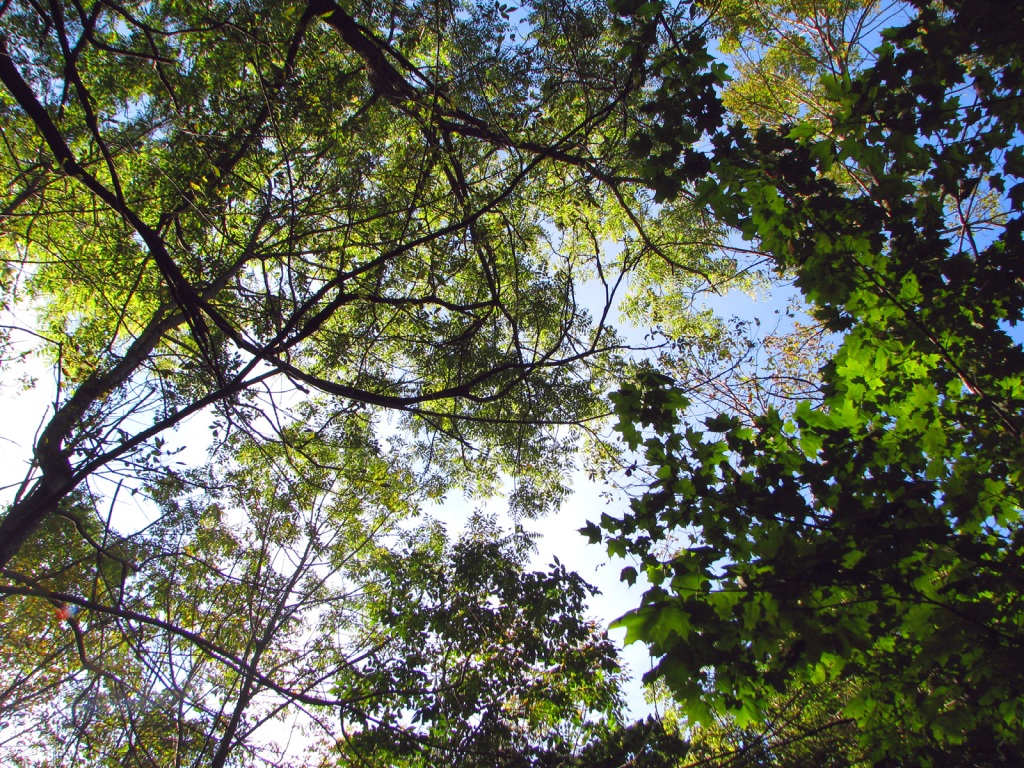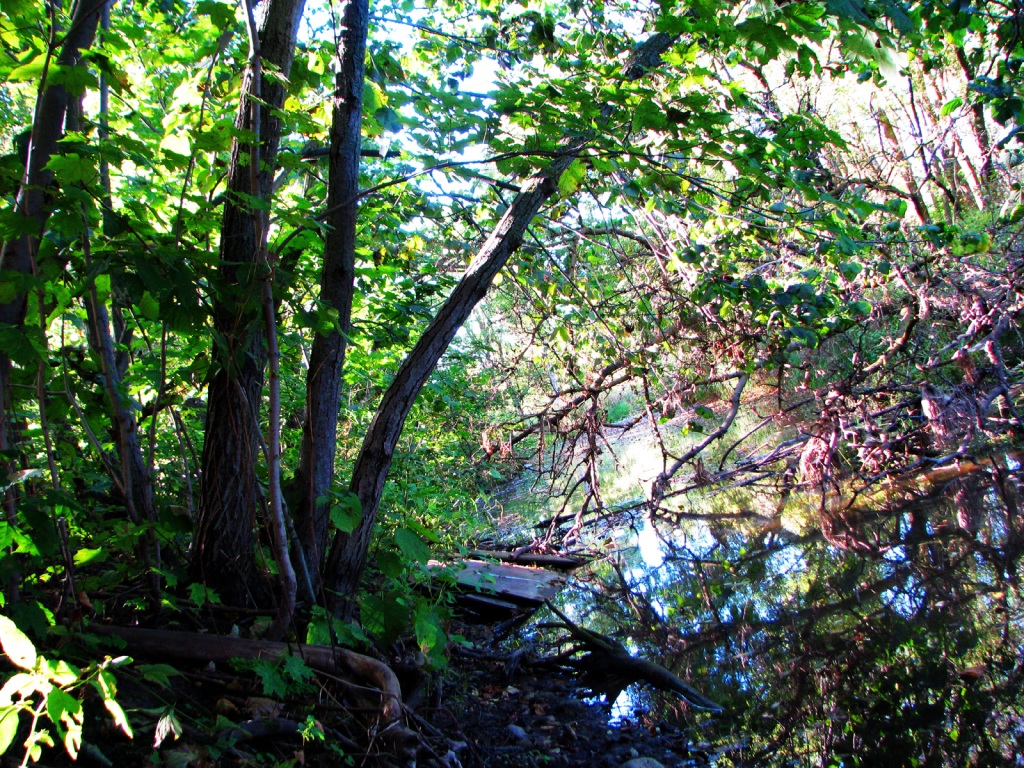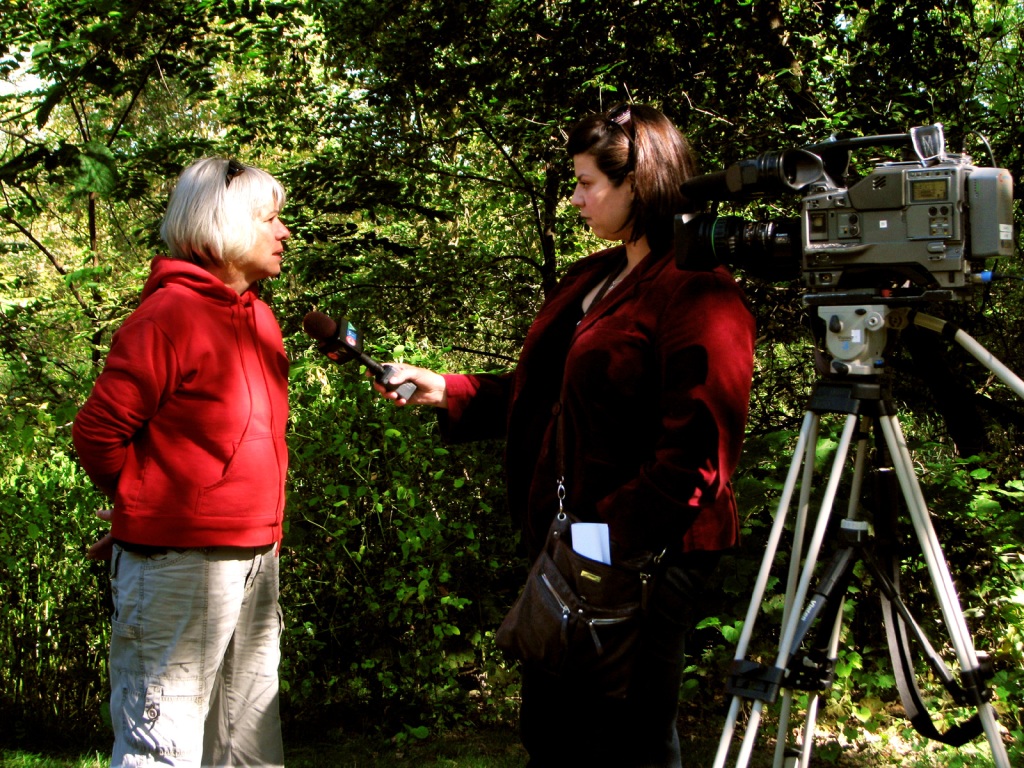Victoria Glen Park is a forested area that has been used as a park for the entire time it has belonged
to the Township of Woolwich.
Shortly after Word War II the area was rezoned residential in case it might be needed to house returning veterans.
However, the politicians at that time managed to get by without sacrificing this lovely natural area that has
been so enjoyed by residents.
Recently it was decided to build an enormous arena complex for the town, intended to replace the existing
arena and swimming pool. Now that the old facilities have been shut down and the new facilities have been built,
it appears that the township had intended all along to pay their share by turning developer and bulldozing
Victoria Glen Park for residential development.
Does this mean if Victoria Glen Park hadn’t existed there would not have been a new rec center? I think not.
If there was no Victoria Glen Park, the Township would have found the money elsewhere.
Apparently enough people did not come to the previous council meetings to show their disapproval,
because the following report is evidence that Woolwich Council didn’t hear what the residents had to say.
The next meeting will be held at the New Town Hall at 6:00pm November 3rd.
Please come and bring your parents, your children,
your classmates, your team, your neighbors…
because losing even part of Victoria Glen Park is a loss that will damage our entire community.
It isn’t a very big area to begin with, and it is a miracle that the complex eco-system has
managed to survive in this tiny space.
Particularly considering the fact that the former fairgrounds and so much farmland is being developed,
Woolwich will need all the parkland we have now and then some.
It may seem like a cash cow to the current crop of politicians, but it will cost a lot more to replace later.
Not that it would be possible to go out and buy a ready-made forest. This is why this bit of land needs
to be rezoned as parkland. Now.
Even worse, the information about the water system reported indicates that
the houses in the vicinity currently suffer problems of flooding. Damaging this natural filtration system
will make those problems worse, as well as likely resulting in a subdivision full of houses that will flood
several times a year.
This could actually turn into a long term financial drain for the township, since the township knows full well
about the flood plain issue, and would therefore be liable for resulting damages.
For more information on how you can help preserve Victoria Glen Park visit: http://preservevictoriaglenpark.blogspot.com/
TOWNSHIP OF WOOLWICH
OFFICE OF THE CAO
REPORT: A6-2009
MEETING DATE: November 3, 2009
MEETING TIME: 6:00PM
LOCATION: Council Chambers
TITLE: Victoria Glen
FILE ID: D.02.VE
PREPARED BY: Laurel Davies Snyder
DATE REVIEWED BY MANAGEMENT TEAM: Tuesday October 13, 2009
RECOMMENDATIONS:
THAT the Council of the Township of Woolwich direct Township Staff to:
1. Proceed with declaring the Township-owned lands shown on Map 1 as Parcels 1, 2, 3, and the
unopened road allowance as surplus, and proceed with the development of these lands for residential
uses in accordance with the following key principles:
1. Develop an appropriate number of residential lots on the Township-owned lands (Parcels 1, 2,
3) and lands currently owned by the Region (Parcels 4 and 5) as appropriate to the existing
urban form and densities in the surrounding area.
2. Provide for accessible, safe, and well-designed public access throughout the development
area, including connections to the surrounding area.
3. Implement enhancements to pedestrian access points to the Kissing Bridge Trailway to
improve the experience for trail users, including consideration of a public access through the
subject lands to the Kissing Bridge Trailway.
4. Manage any encroachment on the subject lands associated with adjacent properties.
5. Be sensitive to the needs and potential impact(s) on the surrounding area, and ensure that
appropriate measures are taken to mitigate the impact of residential development on the
surrounding area.
6. Conform to the policies in the Township of Woolwich Official Plan, including Environmental and
Stewardship policies.
7. Ensure that any residential development and associated infrastructure is outside of the
regulatory floodline and other significant environmental features regulated by the GRCA and
outside of the Locally Significant Natural Areas as identified by Ecoplans.
8. Conduct an improvement cut of the woodlot in accordance with good ecological principles.
9. Provide for the protection and conservation of trees where possible.
10. Balance environmental protection and conservation with providing sufficient funds for Township
of Woolwich Capital Projects.
11. Ensure that appropriate reforestation, tree planting, and/or other environmental rehabilitation
projects within the general area of the subject lands are implemented in conjunction with the
development of the subject lands, and in accordance with good ecological principles.
12. Ensure that development does not adversely impact the existing infrastructure and services in
Elmira.
AND FURTHER THAT the Council of the Township of Woolwich direct Staff to engage necessary services
to complete required studies to determine the appropriate development option;
AND FURTHER THAT the Council of the Township of Woolwich direct Staff to continue negotiations with
the Regional Municipality of Waterloo for the purchase of the Region-owned lands (Parcels 4 and 5 on Map
1 of Report A6-2009), and that the final approval of the Purchase & Sale Agreement, if successfully
negotiated, will be conditional upon:
· standard conditions applying to any Purchase & Sale Agreement;
· that the Purchase & Sale Agreement is reviewed by the Township Solicitor; and,
* Council passes a By-law authorizing the Mayor and Clerk to sign the Agreement.
AND FURTHER THAT Staff report back to the Council of the Township of Woolwich with a full analysis, preferred development option, and work plan with a target date of Fall 2010.
1.0 Introduction AND BACKGROUND
In 2008, Planning Staff presented a report to Council recommending a process for the disposal of Surplus Lands and Properties to generate funds for the Capital Projects Fund. In recognition of the complexity of the issues related to the Victoria Glen lands, the Staff Committee recommended that they be managed separately.
A Public Meeting was held on June 23, 2009 to present Report A3-2009 Review of Victoria Glen Lands. In this report and presentation, Staff reviewed the status of the subject lands, key issues identified to date, and five scenarios for residential development to illustrate potential options.
Approximately 100 people attended the June 23, 2009 Public Meeting and an excerpt of the Minutes from the meeting are attached as Appendix 1 to this report. Immediately prior to and following the June 23, 2009 Public Meeting, Staff received feedback and input in the form of telephone calls, petitions, and letters. Based on a review of the correspondence and feedback received at the Public Meeting, Staff has attempted to summarize the reasons articulated for retaining the subject lands as they are, as follows:
1. the environmental value of the subject lands (e.g. habitats for birds and animals, water system, oxygen);
2. the historical value of the subject lands (e.g. people have had many positive experiences in the area over time);
3. the educational value of the subject lands;
4. the aesthetic value of the subject lands;
5. the spiritual value of the subject lands (i.e. provides a peaceful and quiet place to meditate); and,
6. the recreational value of the subject lands (e.g. walking, running, bird watching).
Following the Public Meeting, Staff was requested to assess the issues and feedback, and respond to Council in Fall 2009 with an evaluation and recommendations. To maintain consistency, Staff took the approach used with all planning applications made to the Township of Woolwich. More specifically, a Staff Team reviewed and evaluated the issues, feedback, and background information in two ways:
· evaluation of the applicable policy and the technical merit of the proposal; and,
· evaluation of the benefits of developing the subject lands versus retaining the subject lands for passive open space.
The purpose of this report is to present this evaluation, resulting analysis, and recommendations regarding the viability and appropriateness of proceeding with declaring the subject lands surplus and developing them for residential purposes to Council for consideration.
2.0 CONTEXT
2.1 Description of the Subject Lands
The Township-owned lands proposed to be declared surplus and developed for residential purposes are shown on Map 1 as Parcels 1, 2, 3 and an Unopened Road Allowance. The lands currently owned by the Region are shown on Map 1 as Parcels 4 and 5. Township Staff is negotiating with the Region regarding purchasing these lands.
All five parcels of land are located north and south of Victoria Glen Street, and north and south of an unopened road allowance between Dunke Street and Snyder Avenue. The subject lands are approximately 4 blocks from Elmira’s downtown core, and adjacent to an existing low density residential neighbourhood defined by detached homes and a modified-grid road pattern. The subject lands are used as passive open space and are not actively maintained by the Township, although informal trails have been created through various parts of the area. There is an informal connection to the Kissing Bridge Trail adjacent to the subject lands.
The Township-owned parcels considered for surplus total approximately 1.03 hectares (2.55 acres) and are part of a larger Township-owned area, totalling approximately 5 hectares (12.35 acres). The balance of the Township-owned lands, shown on Map 1 are not considered for development or surplus.

- Table One: Lands Declared Surplus
The Township-owned land proposed to be retained as Open Space is located north of Parcels 1 and 3 and totals approximately 3.97 hectares (9.8 acres)

- Retained As Open Space
2.2 Current Use of the Subject Lands
Parts of Parcels 1, 3, the Unopened Road Allowance, and the lands north of Parcels 1 and 3 are used for passive recreation (e.g. walking, bicycling, birdwatching), education (local school groups), and spiritual activities (e.g. meditation). Informal recreational paths have been created by members of the public to facilitate these activities.
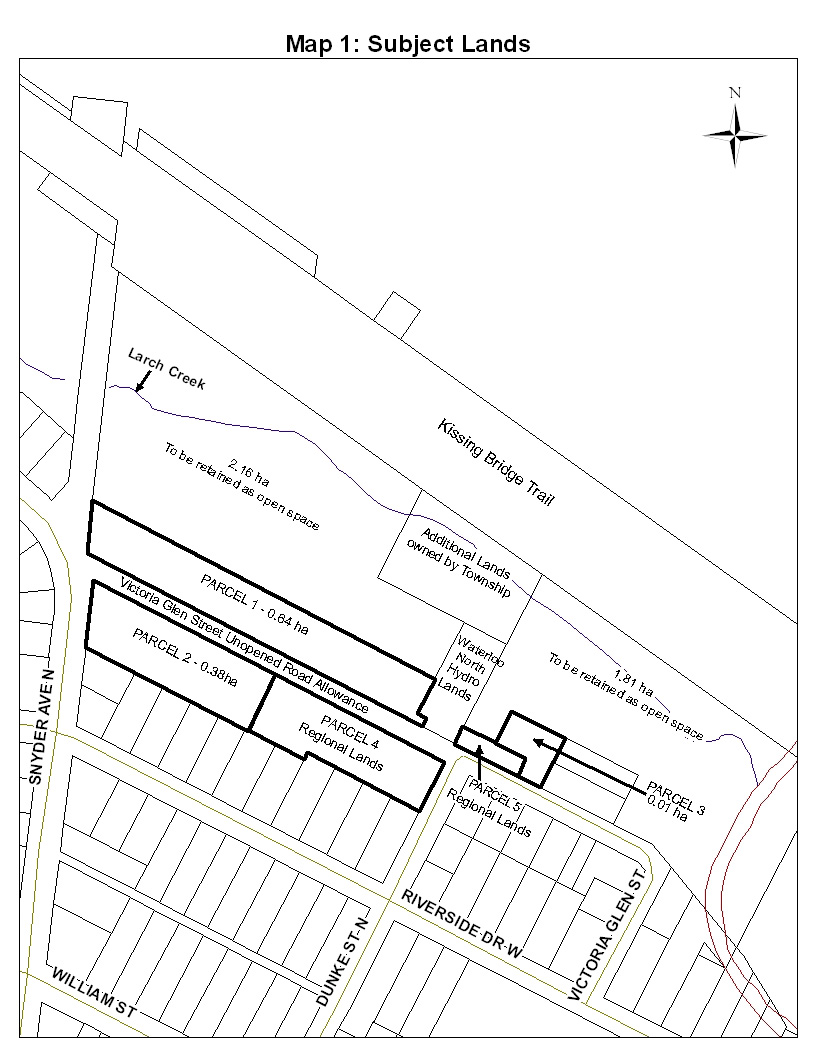
3.0 EVALUATION OF POLICY AND TECHNICAL ISSUES
3.1 Planning Policy
The subject lands are designated for Residential and Ancillary uses in the Township of Woolwich Official Plan (OP). Targets have been set in the Township’s Official Plan to support and encourage growth within existing urban areas, and discourage growth in rural and agricultural areas. Therefore, in terms of policy directions and goals, development of the subject lands for residential uses conforms to the OP and is an appropriate and reasonable land use for this location. In terms of Regional policies, the Regional Official Plan (ROP) also supports growth within existing urban areas and the development of complete communities. The ROP designates the Elmira Settlement Area as within the Township Urban Area designation, and the subject lands are within the Elmira Settlement Area. Therefore, development of the subject lands for residential uses also conforms to the ROP.
The Provincial Planning Policy document, Places to Grow, places an emphasis on directing growth to existing built up areas to make efficient use of infrastructure, encourage the development of complete communities, and protect rural, environmentally significant, and agricultural land. To implement these policies, Places to Grow requires that by 2015, the Region is required to secure 40% of new growth within existing areas. To meet this target, the Township will have to direct a greater share of its new growth to existing settlement areas (target to be determined). Development of the subject lands would support this goal and be a logical extension of the overall residential neighbourhood. Through functional design, the components of the development can be complimentary, consistent, and enhance the surrounding neighbourhood.
The subject lands are adjacent to natural features, a community trail, and agricultural uses. It is important to recognize that in addition to the proposed development conforming to Regional and Provincial policy, the Township must also have regard to the Environmental and Stewardship policies in the Official Plan with respect to the proposed development.
3.2 Review of Environmental Issues
Township policy is structured to support efficient use of existing urban areas, conserve and enhance environmental features, and discourage growth into environmentally significant, agricultural, and rural areas. Therefore, research of the overall area – including the subject lands – was required to determine if development is possible given the environmental and stewardship policies and mandates of the Township, Region, and Grand River Conservation Authority (GRCA), and if so, what the potential developable area would be.
The lands containing the creek, wetland, steep slopes and floodplain area are located north of the subject lands (i.e. north of Parcels 1 and 3) and are currently designated Open Space. The Environmental Stewardship Policies in Chapter 13 of the Township’s Official Plan has not identified that any of the subject lands contain Provincially, Regional or Locally Significant natural or wooded areas. In addition to evaluating the subject lands and surrounding area according the Township’s Official Plan, Staff undertook a number of initiatives to evaluate the significance other natural features and the wooded area in keeping with the environmental policies in the Official Plan including consultation with: the Grand River Conservation Authority (GRCA); Environmental Planner at the Region of Waterloo; and, a private Environmental Consultant (Ecoplans). The following sections provide a summary of the comments received from each party.
Grand River Conservation Authority (GRCA) Comments
A portion of Larch Creek, which is a tributary of the Canagagigue Creek, traverses the area north of Parcels 1 and 3 in a west/east direction. Associated with the creek are wetlands, steep slopes, and floodplain areas covering approximately half of the Open Space area to the north of Parcel 1 and the majority of the Open Space area to the north of Parcel 3. These two parcels are regulated by the Grand River Conservation Authority (GRCA) and development within or in close proximity to these environmental features is prohibited. Staff met with the GRCA to discuss this, and GRCA Staff confirmed that there may be opportunity to develop a portion of the area immediately adjacent to the Unopened Road Allowance – shown as Parcel 1 on Map 1 – as this portion would be outside the regulatory floodline and adequately set back from the wetland area.
A GRCA permit would be required for the portions of Parcels 1 and 3 that are outside the environmental features but within the buffer area around these features and, therefore are still within the GRCA regulation limit. There should be no significant GRCA issues with developing the lands south of the Unopened Road Allowance (Parcels 2 and 4). To evaluate a permit application for development, the GRCA requires the following:
· a detailed stormwater management report;
· a lot grading and drainage plan;
· survey of the floodline elevation (as the regulatory floodline has been engineered (this survey must demonstrate that all of the proposed residential lots will be outside the regulatory floodline);
· verification of the wetland area in the field;
· a discussion of soils and hydrogeology; and,
· establishment of a 30 metre setback from the GRCA’s wetland boundary.
Environmental Planner, Region of Waterloo
Staff solicited comments from the Region’s Environmental Planner, who indicated that there is potential for development to occur within the subject lands provided that the value of the woodlot is maintained or even enhanced through appropriate forest management activities. He believes that the value of the forest is to provide aquatic and wildlife habitat, microclimate effects (temperature changes through shading and wind break), and aesthetics for both the surrounding residences and those using the trails. Prior to undertaking any activity, the Environmental Planner suggested the following:
· Complete a Natural Habitat Inventory to determine how the woodlands are linked with the larger natural system and to identify potentially sensitive/significant features;
· Develop a long-term management plan to maintain the overall health of the environmental features, which includes providing suitable buffers and zoning from the creek and implementing measures to deter encroachment (dumping, building, clearing, etc.); and,
· Undertake an improvement cut of the woodlot to take down poor quality, declining or hazardous trees. Once the trees are taken down, it may be easier to determine the appropriate lot and building layout by avoiding areas of high quality or valued trees. If the cutting is completed a least a year before development occurs, the balance of the woodlot will have time to adapt to the new conditions.
As recommended by the Region, Staff retained Ecoplans Limited (Environmental Planners) to begin some of the initiatives that the Region’s Environmental Planner suggested by conducting an analysis of the woodlot and other environmental features to determine:
· the quality of the woodlot (i.e. Provincial, Regional or Local Significance);
· its value as a natural wildlife habitat;
· its current condition; and,
· the conclusions and recommendations that can be formed with respect to the development potential within or adjacent to this area.
This evaluation was based on multi-season field surveys of the entire lands owned by the Township, including the subject lands, correspondence from the Region’s Environmental Planner, and application of relevant policy and guidelines. Ecoplans provided the Township with the final report, Natural Habitat Inventory / Ecological Evaluation, in August of 2007 and the following is a summary of their observations, conclusions, and recommendations.
Ecoplans completed a three-season (spring, summer and fall) vegetation/wildlife inventory and assessment of the subject lands and surrounding lands in August, September and November of 2006 and May, June, and July of 2007. This assessment was completed in the context of the current planning policy (Provincial Policy, Regional Official Policies Plan, Township Official Plan and GRCA regulations). The site was divided into the following five principal habitat blocks (illustrated on the following Figure):
· Unit 1a and 1b: the riparian zone along the creek at north end of Parcels 1 and 3. The lands contain the floodplain area, open meadow marsh (Unit 1a) and a band of lowland deciduous forest (Unit 1b) along the creek.
· Unit 2a: is a primarily a dry-fresh, closed canopy of mid-aged sugar maple forest/plantation adjacent to Snyder Avenue with occasional to rare, of other species such as Basswood, Common Hackberry, American Beech and White Ash.
· Unit 2b: is primarily a dry-fresh, closed canopy of young to mid-aged sugar maple forest/plantation adjacent to the open cultural meadow. This area has low diversity of other species but contains several large mature Black Walnuts.
· Unit 2c: this central area includes mixed conifers and deciduous plantations. The partially closed canopy is mixed of immature to sub-mature trees including White Pine, Norway Spruce and Black Walnut with occasional Sugar Maple. Regeneration is occurring of White Ash, Norway Maple, Sugar Maple, Manitoba Maple and some Choke Cherry.
· Unit 2d: a smaller plantation of trees dominated by young Black Walnut closed canopy and some White Ash.
· Unit 3: this area is a conifer plantation with natural regeneration, characterized by partially closed canopy of mid-aged Scots Pine and Norway Spruce, with White Ash, Black Walnut and Manitoba Maple. Blow down is abundant in this area.
· Unit 4: this block is a mid-aged to sub-mature mixed plantation containing closed canopy of aged Scots Pine and Norway Spruce and Black Walnut with associated White Ash, Tamarack and Sugar Maple.
· Unit 5: this area comprises of maintained turf grass and cultural habitats along the unopened road allowance and well site.

- Natural Habitat Inventory
FIGURE 1: Principle Habitat Blocks
The following are Ecoplans’ observations and conclusions based on their fieldwork and review of relevant policy:
· No records of endangered species or threatened species.
· No Federally or Provincially designated rare species-at-risk or provincially rare species observed.
· The creek corridor forms a local east-west linkage, providing an opportunity for wildlife movement. The wooded area provides a supplemental habitat, but since it is bounded by residential development it has limited function as ecological linkage/wildlife movement areas.
· No significant wildlife habitat present on the lands.
· No record that the wetland on the property is provincially significant or has been evaluated by MNR.
· The property contains a watercourse, associated floodplain and steep slopes that are regulated by the GRCA. The Township should consult the GRCA to determine an appropriate setback of any development adjacent to the wetland and floodplain areas.
· The woodland on site would likely not be considered Provincially Significant under their criteria.
· The Region has not designated all or portion of the site as an Environmentally Sensitive Policy Area (ESPA).
· A portion of the woodland, primarily within the environmental features adjacent to the Creek (Units 1a and 1b), does display characteristics of a Locally Significant Natural Area (LSNA). The Township should avoid significant encroachment into the LSNA limits. The general limit of the LSNA is coincident with the south limit of Unit 1b.
In considering the ecological significance and sensitivity of the woodland features on site and relevant policy, Ecoplans recommends the following:
· No development potential in Unit 1a or 1b because of the existing environmental features (wetland, creek, floodplain, etc.) which display characteristics of a Locally Significant Natural Area (LSNA).
· Some development potential in Unit 2 (a-d) outside the floodplain area because the woodland generally includes several cultural vegetation features of relatively low ecological significance. Some of the planted Sugar Maples have naturally regenerated and are in moderately good health. As a result, the area does offer some ecological function in terms of diversity of wildlife and native plant species. Rear lot easements are recommended.
· Unit 3 has limited potential due to the floodplain. The area has been disturbed and displays low ecological significance.
· Unit 4 and 5 have the greatest development potential because of disturbance to the area, low ecological significance, and location outside the floodplain area.
· To consult with the GRCA to delineate the wetland and floodplain area and determine the appropriate setbacks to the various features (with buffer management recommendations).
· Develop a long term management plan strategy for the retained woodlot in Unit 2.
· Carry out an improvement cut of the woodland in Unit 2 as recommended by the Region.
· Refine the development concepts to reflect the natural environmental recommendations with input from the review agencies.
In summary, based on work done by Ecoplans, comments from the Regional Environmental Planner, and the GRCA’s review of the Ecoplans report, there appears to be no significant environmental constraints that preclude some forms of residential development on the subject lands as identified on Map 1. Development in these areas may require shallower lots to maintain an appropriate setback to the environmental features, as well as wider lots to maximize tree retention. Other mechanisms to ensure conservation of the natural features and tree retention include but are not limited to: tree saving plans, erection of monuments, conservation easements, and restriction of rear yard development. If Council decides to proceed with residential development on the subject lands, a program should be established to implement Ecoplans’ other recommendations.
Ecoplans’ full report is on the Township of Woolwich website – http://www.woolwich.ca – and also available for review at the Township Administration Building at the Planning Counter (1st floor) and the CAO Counter (2nd floor).
In terms of the wooded areas on the subject lands, the Region’s Environmental Planner indicated that there is potential for residential development to occur within the existing woodlot provided that the value of the woodlot is maintained or enhanced through appropriate forest management activities. Both the Region’s Environmental Planner and Ecoplans suggest that the Township should undertake an improvement cut of the woodlot to remove poor quality, declining, or hazardous trees regardless of whether development occurs on the lands. The cost to complete the improvement cut in the woodlot is approximately $2000 ($500 to mark the trees and $500-$1500 to oversee the cut). Revenues received from the sale of the trees for firewood could offset this expense. Staff believes that removing a portion of the trees from the subject lands can be completed in a way to have a negligible impact to the surrounding area through use of tools already mentioned in this section and continued by groups such as TWEEC. Staff recommends allocating funds to TWEEC for reforestation, tree planting, and/or other environmental rehabilitation projects within the Township.
In conclusion, the proposed residential development on the subject lands conform to the policies in the Township’s Official Plan and the Region’s Official Plan (ROP). In addition, based on research by Ecoplans and consultation with the GRCA and Region, the subject lands do not contain significant natural features that would preclude residential development. In addition, through the normal development process, consultation with agencies such as the GRCA will ensure that appropriate measures will be put into place to protect and conserve surrounding features.
3.3 Other Technical Issues
Amount of Parkland and Open Space
Members of the public commented that development of the subject lands will reduce the amount of open space available for use by the public. At the June 23, 2009 Public Meeting and in correspondence, members of the public have expressed concern about this for a variety of reasons (including environmental, recreational, spiritual, and educational), and stated that there are limited opportunities for the public to access open space and parkland in Elmira and the Township of Woolwich.
· Staff Comments: Preliminary development options illustrate that the current amount of land used as parkland and open space could be reduced by 1.03 hectares (2.55 acres), which is 20.6% percent of the overall area owned by the Township. This amount might actually be less due to tree conservation plans, and new features designed to enhance and connect open space. In addition, preliminary development options illustrate that lands immediately north of the subject lands and connections to the Kissing Bridge Trailway would be maintained as Open Space, if not enhanced.
In terms of opportunity and access to open space and parkland in Elmira and Woolwich Township, Map 2 illustrates the public parks and trails within proximity to the subject lands. Map 3 illustrates public access points to the Kissing Bridge Trailway.

- Map 2: Trails and Parks in Elmira

- Map 3: Pedestrian Access Points to Kissing Bridge Trail
Sanitary Sewer Capacity
· Staff Comments: In 2006, Stantec completed a servicing study for the Township which included a review of the existing system as it pertains to the Lunor development, the subject lands, and the industrial lands to the east. It was concluded that the current sanitary system can accommodate residential development on the subject lands.
Replacement of the sanitary sewer within the unopened road allowance would not be triggered by development on the subject lands; however, the sewer will have to be upgraded for the Lunor residential development. Therefore, the unopened road allowance through the subject lands will ultimately be disturbed, regardless whether the development occurs on the subject lands.
Storm Water Management (volume and quality)
Citizens expressed concerns that storm water currently flows directly into Larch Creek from the storm pipe at the end of Dunke Avenue, and that the addition of residential units and removal of trees and vegetation would negatively affect the water quality in the creek and increase the risk of flooding.
· Staff Comments: While development on the subject lands would increase the amount of hard surfaces, decrease permeability, reduce the amount of vegetation on the subject lands, and result in an increased amount of runoff into the water system (with greater amounts of sediment and increased temperatures), there are ways to manage these issues.
In the mid-1980s, storm water management ponds started to be incorporated into residential developments as a method of managing the volume of storm water. Now, storm water management ponds are utilized to manage both volume and quality of water. Installing a storm water management pond in the general vicinity of the subject lands is not likely necessary as the scale of the proposed development would not warrant this approach. For this scale of residential development, an oil-grit separator could be incorporated into the new road to manage water quality. In addition, forms of quality control can also be installed at the end of the storm pipe on Dunke Avenue. Staff suggests that conservation easements for the backyards of residential lots are also considered as a method of managing storm water quality and quantity.
Through the development process, a number of studies will be completed to inform the detailed design of the residential development. For example, a Groundwater Monitoring Program will be undertaken to evaluate the ground water and how it relates to development of the subject lands. In addition, a Storm Water Management Plan is required, which will be reviewed by Township Engineering and GRCA Staff. The information developed through all studies will result in specifications that will be incorporated into a detailed design, allowing Staff to evaluation options. This process will ensure that issues including water flow, water quality, drainage, erosion, flooding, and access are addressed.
Regional Land (Parcels 4 and 5)
The Region of Waterloo currently own Parcels 4 and 5. The Township is exploring the purchase of these parcels.
· Staff Comments: Staff recommends that the final sale of the Regional lands to the Township is conditional on:
· standard conditions applying to any Purchase & Sale Agreement;
· that the Purchase & Sale Agreement is reviewed by the Township Solicitor; and,
· Council passes a By-law authorizing the Mayor and Clerk to sign the Agreement.
If the Township does not secure the Regional lands but the Township-owned land is developed and the road is built, provisions can be made to secure future residential development on the Regional lands and recoup expenses for the construction of roads and services by taking a 1-foot reserve. Therefore, if a private party develops the land in the future, they will have to compensate for the appropriate share of roads and services.
Although we are in negotiations, the purchase of the Regional lands will not be pursued if Township Council chooses to not pursue development of the subject lands.
Water Service
· Staff Comments: A 150mm (6”) water line would be installed into the road allowance to provide potable water to the development. There are no issues with installing this infrastructure.
Road Connections
Members of the public expressed concern that the addition of new residential units to the general area will slightly increase the amount of vehicular traffic on the adjacent roads, creating safety and volume issues for drivers and pedestrians.
* Staff Comments: The Township’s Official Plan promotes the modified-grid road pattern where appropriate and connections to existing roads. The subject lands contain an existing unopened road allowance that provides opportunity for a logical extension of Victoria Glen Street (from Dunke Street to Snyder Avenue). The new road would be consistent and compatible with the current modified-grid road pattern in the neighbourhood. As with all residential development, appropriate and safe design for vehicular, pedestrian, and bicycle traffic would be engineered and a functional design would be developed. In terms of traffic volume, the surrounding roads are designed to accommodate traffic and the addition of 25-30 residential units is well within the design capacity of the roads. Engineering Staff commented that a Traffic Study is not warranted for small developments like this.
The unopened road allowance is 12.2 meters (40 feet) in width, which is similar to a portion of Victoria Glen Road. For any type of residential development other than a condominium, a road would have to be developed, which would be a cost to the Township. Engineering Staff noted that the existing road allowance is substandard and would be brought into conformity with typical road cross-sections.
Staff will look specifically at the connections of the subject lands to Snyder Avenue, and other key areas as identified. With respect to the Playford Farm, the only issue that will be addressed by Township Staff in terms of road connections and access will be the connection to Snyder Avenue.
Encroachment
Small sheds, gardens, lawns, and other land uses associate with adjacent properties are encroaching onto Township and Regional lands.
· Staff Comments: Staff suggests that these encroachments be addressed prior to development of the subject lands. Staff also suggests that education about encroachment is part of addressing this issue.
Kissing Bridge Trailway
Members of the public have questioned whether or not development will remove and/or change the Kissing Bridge Trailway.
· Staff Comments: There is no intention to remove the Kissing Bridge Trailway or remove public access points to the Kissing Bridge Trailway in the vicinity of the subject lands. Public Trails in Woolwich, including the Kissing Bridge Trailway, are important aspects of the Township and Staff is committed to maintaining these resources.
Township of Woolwich Environmental Enhancement Committee (TWEEC)
Clarification of the role of Township of Woolwich Environmental Enhancement Committee (TWEEC) with respect to the subject lands was requested.
· Staff Comments: TWEEC is a Committee of Council and set up as an operations group to complete projects throughout the Township. TWEEC was not intended or set up to provide comments on planning applications.
3.4 Summary of Evaluation of Policy and Technical Issues
In conclusion, based on consultation with Township Staff, research and study by Ecoplans, the Region, and consultation with the GRCA, development of the subject lands for residential uses is technically feasible subject to completing additional studies identified through this report as well as the detailed design and engineering of the development. Notwithstanding this, there is another key issue requiring discussion: the issue of the benefits of developing the subject lands versus retaining the subject lands as open space.
4.0 Benefits of developing the subject lands versus retaining the subject lands as open space
Staff considered whether the subject lands should be retained as part of the overall area and not developed. This issue was clearly articulated by members of the public. Staff received comments indicating that developing the subject lands is not required and inconsistent with the Township’s policies. Furthermore, members of the public stated that the subject lands should be preserved as they are for aesthetic, recreational, educational, and spiritual uses (i.e. not developed for residential uses).
If the Township does not explore development of the subject lands, the subject lands could be preserved. In this scenario, the Township would not receive anticipated revenues for the Capital Facilities Program. The financial implications of not pursuing development of the subject lands are outlined in the following section, Section 5.0.
Conversely, all vegetation on the subject lands could be removed and cut down to maximize development potential. This would allow for a greater number of smaller lots but no tree retention. In this scenario, the Township could receive anticipated revenues for the Capital Facilities Program.
A third option is to design a balanced approach which would entail larger lots and greater tree conservation and protection on the subject lands. Although Staff have received questions and comments about the proposed development of the subject lands in relation to the Township’s Environmental and Stewardship Policies, Staff believe that the Township has implemented this balanced approach in the past with success. There are at least two developments that have occurred within woodlots: South Parkwood residential development, and the Walmart commercial development. In both cases, the integrity and functioning of the woodlots have not been compromised. In addition, in both instances, the majority of land has been retained as Open Space, thereby protecting land in perpetuity that would otherwise be developed and not protected.
if Council proceeds to develop the lands, Staff will look at a variety of options, including a lotting scheme that provides greater exposure and access to the wooded area north of the unopened road allowance. The Township could consider the feasibility of not developing a certain number of lots north of the unopened road allowance to provide greater exposure and accessibility to the woodlot.
It is important to recognize that the Township has been actively accumulating open space where possible, and effectively using the development approval process to secure, conserve, and protect open space and environmentally sensitive areas. Over the past 20 years, approximately 149.71 hectares (370 acres) has been accumulated and secured as open space for the Township through the development approval process in Breslau, Elmira, and St. Jacobs.
5.0 FINANCIAL SUMMARY
Through the Capital Facilities Program, Staff is anticipating allocating a portion of the sale of assets in the amount of approximately $1.93 million. Of this amount, $1.5 million was to be realized from the development of the Victoria Glen lands. Although the Township may not require all of the funds received from the development of the Victoria Glen lands for the Capital Facilities Program, the additional revenue will be required to aid in funding the 5-year Capital Forecast. Also, any additional revenue will be used to offset costly hard infrastructure projects that may be impacted by the outcome of infrastructure review studies.
The detailed financial implications of proceeding with declaring the subject lands surplus and developing them for residential uses could potentially net the Township approximately $1.93 million if the Regional lands are acquired, and approximately $1.29 million without the Regional lands as part of the development.
If Council chooses not to proceed with declaring the subject lands surplus and developing the Victoria Glen lands, the monies anticipated will have to come from another source. Staff has identified a few options for securing the necessary funding in substitute of the potential proceeds from the Victoria Glen Lands, as follows:
Use of Long-term Borrowing / Debenture
Recently through report F22-2009, Council approved the long-term borrowing of $3.72 million as part of the overall financing of the Capital Facilities Program. This amounts to approximately $181 per capita for the Township of Woolwich. Through report F18-2009 (Capital Budget Forecast 2010-2013), Council amended the debenture maximum per capita from $190 to $230. If Council were to replace the funds anticipated from the development of the Victoria Glen Lands with a long-term borrowing option, this would create an additional 1.7% burden in the 2010 levy requirement.[1] For Council’s information, a 1.7% increase would impact the average residential tax bill in the Township by an additional $9.73. It would also increase the existing debt per capita to $254, which would mean that Council will need to further amend the maximum debt per capita. In addition, depending on Council’s debt threshold, this may jeopardize the Township’s Five-year Capital Forecast as the plan is based on modest debenture amounts. This could result in deferring or possibly cancelling planned capital projects such as roads and bridges.
Use of Proceeds from the Sale of Other Surplus Lands / Properties
As Council is aware, through report E75-2009 a number of lands and properties were declared surplus. Through the disposal of these properties the Township could realize up to approximately $1.2 million in additional revenue. There are a number of inherent dangers with using this option in replace of the proceeds from Victoria Glen. For example, the Township may not be able to sell these properties for a number of years and when these properties are sold, the final number may fall significantly short of the projected amount. As well, the proceeds from the sale of the properties and lands could be used as a source of funding to aid in the replacement of potentially costly hard infrastructure (i.e. roads and bridges).
Use of Reserve and Reserve Funds
This issue has been raised in other situations in the Township and Staff’s opposition to this approach remains the same – this goes against the fundamental purpose of establishing Reserve and Reserve Funds and Staff does not recommend this approach. The fundamental problem with this alternative is the “stealing from Paul and giving to Peter” scenario. If we were to take funds from Reserve and Reserve Funds, we would in essence endanger the activities that these Reserve and Reserve Funds were specifically set up to achieve. If Council is willing to entertain this option, a full evaluation and discussion will need to occur to determine the activities that would need to be deferred or cancelled.
6.0 Conclusion and Recommendations
6.1 Conclusions
Staff has concluded that the Township should continue to explore the options for residential development on the subject lands based on the following reasons:
* Development can be achieved outside of significant environmental features: Based on research and consultation by Ecoplans, the GRCA, and the Region, there is sufficient land adjacent to the unopened road allowance and outside of the significant environment constraints regulated by the GRCA for residential development. In addition, a GRCA permit would be required for development as well as a detailed stormwater management report, a lot grading and drainage plan, and a survey of the regulatory floodline to demonstrate all proposed residential lots are located outside of the regulated floodline. These requirements will ensure that proper process is followed and appropriate measures are implemented to protect and conserve environmental features of the surrounding area.
· Conformity with Township Planning Framework: The current Official Plan and Zoning By-law provides for some form and scale of residential development on a portion of the subject lands, and there are no technical reasons preventing the subject lands from being developed for residential purposes and in accordance with good planning, environmental, fiscal, and design principles.
* Conformity and Support for Provincial and Regional Planning Goals: This development would go towards meeting Woolwich’s intensification targets within the existing built-up area as prescribed in the ROP and Provincial Growth Plan.
* Sufficient Servicing Capacity: The subject lands contain an existing unopened road allowance with services that provide a natural and logical extension of the residential neighbourhood and street pattern. In addition, there is sufficient sanitary service capacity to accommodate residential development, without upgrading the existing sewer within the unopened road allowance.
* Fiscal Responsibility: There is the potential to generate a significant net surplus given the estimated revenues and costs for each development option which would contribute to the Township Capital Projects Fund and future Capital Projects.
* Balance: The members of the public who attended the June 23, 2009 Public Meeting and submitted comments were virtually unanimous in their desire to see the subject lands preserved as they are for aesthetic, recreational, educational, and spiritual purposes. Staff believes that since the subject lands comprise a small part of the overall area, these activities can still be accommodated while also enabling the municipality in balance, to achieve other important objectives relating to financing important capital projects.
6.2 Recommendations
Staff recommends that the Council of the Township of Woolwich proceed with declaring the subject lands surplus and exploring the development of the subject lands for residential purposes in accordance with the following key principles:
1. Develop an appropriate number of residential lots on the Township-owned lands (Parcels 1, 2, 3) and lands currently owned by the Region (Parcels 4 and 5) as appropriate to the existing urban form and densities in the surrounding area.
2. Provide for accessible, safe, and well-designed public access throughout the development area, including connections to the surrounding area.
3. Implement enhancements to pedestrian access points to the Kissing Bridge Trailway to improve the experience for trail users, including consideration of a public access through the subject lands to the Kissing Bridge Trailway.
4. Manage any encroachment on the subject lands associated with adjacent properties.
5. Be sensitive to the needs and potential impact(s) on the surrounding area, and ensure that appropriate measures are taken to mitigate the impact of residential development on the surrounding area.
6. Conform to the policies in the Township of Woolwich Official Plan, including Environmental and Stewardship policies.
7. Ensure that any residential development and associated infrastructure is: outside of the regulatory floodline, wetland, steep slopes, and other features regulated by the GRCA; and, outside of the Locally Significant Natural Areas as identified by Ecoplans.
8. Conduct an improvement cut of the woodlot in accordance with good ecological principles.
9. Provide for the protection and conservation of trees where possible.
10. Balance environmental protection and conservation with providing sufficient funds for Township of Woolwich Capital Projects.
11. Ensure that appropriate reforestation, tree planting, and/or other environmental rehabilitation projects within the general area of the subject lands are implemented in conjunction with the development of the subject lands, and in accordance with good ecological principles.
12. Ensure that development does not adversely impact the existing infrastructure and services in Elmira.
7.0 NEXT STEPS
If development of the subject lands is to be pursued, the following steps will be undertaken by Township Staff:
· continue negotiations with the Regional Municipality of Waterloo for the purchase of the Region-owned lands and successfully negotiate a Purchase & Sale Agreement; and,
· engage necessary services to complete required studies to determine the appropriate development option.
Staff will report back to the Council of the Township of Woolwich with a full analysis, preferred development option, and work plan with a target date of Fall 2010.
If the Council of the Township of Woolwich does not proceed with declaring the subject lands surplus and proceeding with development of the subject lands for residential purposes, Staff recommends that Council direct Staff to review the land use designation of the subject lands as part of the Township of Woolwich Official Plan Review.
List of appendices
Appendix 1: Excerpt of the Minutes from the June 23, 2009 Township of Woolwich Public
Meeting
LIST OF FIGURES
Figure 1: Principle Habitat Blocks
LIST OF MAPS
Map 1: Subject Lands
Map 2: Trails and Parks in Elmira
Map 3: Pedestrian Access Points to the Kissing Bridge Trailway within the vicinity of the
Subject Lands
Appendix 1:
Excerpt from Township of Woolwich Committee of the Whole Minutes June 23, 2009
The Committee of the Whole met on the above date in Closed Session commencing at 6:00 p.m. for regular session. Present: Mayor Strauss, Councillors Bauman, Martin and Weber. Councillor Weber chaired the meeting.
DISCLOSURES OF PECUNIARY INTEREST
None.
A03-2009: Public Information Report: Review of Victoria Glen Lands
Laurel Davies Snyder, Economic Development & Tourism Officer addressed Council and members of the public stating that the public meeting to discuss surplus property is not required under the Planning Act but was scheduled to determine public interest in the property.
Ms. Snyder provided some background information about the property which encompasses 3 parcels owned by the Township for a total of 1.03 hectares or 20% of the total area of the Glen. A description of the land was given stating its use for hiking, walking and education the area is also connected to the Kissing Bridge Tail. Parcel 1 is located to the north of the unopened road allowance (1.58 acres), Parcel 2 is located to the south side of the unopened road allowance (0.94 acres) and Parcel 3 is located adjacent to Regional lands and total 0.03 acres. Parcel 1 and 2 and the unopened road allowance are zoned Residential – One Unit Medium Density (R-2A) and Parcel 3 is designated Residential – Mixed Medium Density (R-4).
Ms. Snyder outlined the issues identified to date including; adjacent parcels owned by the Region, the connection to the Kissing Bridge Trail, environmental features and the unopened road allowance. Ms. Snyder explained the 5 concepts that were developed to generate discussion, obtain input and identify key issues. A Notice of Public Meeting was circulated to homeowners with 150 meters of the subject lands on May 26, 2009, on May 30th the Notice was posted in Community Page, and June 1st it was posted to the website. Next staff will analyze the issues presented, determine the viability and appropriateness of proceeding with declaring the lands surplus and bring forward a recommendation report for Council’s approval.
Councillor Weber thanked the audience for attending the meeting and called the first delegation.
Ken Reger: Ken Reger, Elmira presented a letter from Mary Lou McKee, stating her objection to declaring the lands surplus. The park was established as a reservoir park in 1914, which grew into a natural forest area. Mr. Reger reported that the park is used as an educational resource by teachers at Riverside School. He expressed his concern that if the park were altered this would affect the birds and wildlife in the park. Mr. Reger asked that Council redesignate Victoria Glen as parkland.
Cheryl Fisher: Cheryl Fisher spoke to the history of Victoria Glen Park, also known as Reservoir Park, stating that the 8 acre tract of land was first purchased from Menno Snyder for $2000 by public vote in 1914. In 1948 the area was rezoning residential at a time when there was a severe housing shortage in Elmira at the end of the war. Ms. Fisher stated that in 1947 the local Board of Trade and Public Utilities Commission and citizens cleaned up the park, to have it re-established parkland, however the area was rezoned in 1948 under By-law 805. Ms. Fisher reported that as other streets in the area were developed including William Street, Sunset Place and Snyder Avenue North, Victoria Glen remained. In 2002 when the Zoning By-law was reviewed the land’s designate remained residential. Ms. Fisher asked Council to designate the area parkland. She stated that Victoria Glen is advertized second on the Township website under parks. She thanked Council for their dedication towards the Township of Woolwich Environmental Enhancement Committee (TWEEC) and asked that they preserve Victoria Park.
Bert Menkveld: Burt Menkveld, Elmira, reported that he walks in Victoria Glen daily and enjoys the naturalness of the bush. He stated that he has the lowest house in Elmira and when the creek is high his sump pump works overtime. He stated that this will be the same for the new development and many units will have water in their basement. He asked that Council consider Victoria Glen green space not for the dollar value but for the environmental value.
Christa Mercey: Christa Mercey, Kitchener, a former resident of Elmira stated that she received her great respect for nature from Victoria Glen park. She uses the park to exercise and find serenity stating that it connects users with nature and promotes mental health.
Ruth Josephs: Ruth Josephs, Elmira, expressed her appreciation with the park, and asked that it be preserved.
Karen Orr: Karen Orr, Elmira, commented that her family was looking for green space and was informed that Victoria Glen Park was a protected park so she moved to Elmira. Victoria Glen Park, on her option, is selling feature for new residents, as it draws people near. She reported that there are 900 houses being built on Church Street and the park could be used to entice people, and offer a close natural habitat, that connects them to trails. She asked that Council preserve the natural habitat as it costs nothing to maintain. She cited a petition she collected with signatures from Elmira but also Kitchener, Waterloo, Cambridge, Wallenstein, Wellesley from people who use the park regularly. She would like rezoned protective parkland.
DJ Carroll: D J Carroll, expressed his thanks to Council for working with service groups and citizens to build, encourage and promote environment. He stated that residents are passionate about Victoria Park and want to work with Council to preserve it.
John Millar: John Millar, Elmira, commented that he has a background in urban forestry, defined as the ‘careful care and management of urban settings for improving the urban environment’. He commented that destroying trees and parks is not having care for the environment. He reported that there are many species of wildlife and trees in the area and that Council preserve the park for children and future generations.
Susan Bryant: Susan Bryant, Elmira, gave a presentation to Council and members of the public on the important of water in Victoria Glen Park. She reported that the trees in the area comprise a Riparian forest which helps with water runoff, erosion control, water table control. Ms. Bryant stated that the location of the Parcels to be developed are on a slope with the stream at the base, which if developed would precipitate more runoff water, and dirty water running directly into the stream. The mature forests in the park provide a natural buffer for the creek and acts as a filter. Ms. Bryant reported that alternative engineered filters will not be effective, as there is no room for a storm water pond. She also addressed the potential for flooding. Ms. Bryant addressed Council’s support for Clean Waterways, CPAC, TWEEC, and asked that the resdesignate the land parkland to preserve the water source.
Merri-Lee Metzger: Merri-Lee Metzger, a teacher at Riverside Public School commented that preserving Victoria Park gives Council and residents the opportunity to show children that the natural world should be valued not destroyed. Riverside Public School uses the space as an educational tool for children to teach them about the environment. Ms. Metzger asked that Council designate the area as parkland. Ms. Metzger than displayed a slideshow of elementary school children enjoying the park.
Jeff Seddon: Jeff Seddon, Elmira, thanked Councillor Bauman and Shantz for meeting with him to discuss the surplus property. Mr. Seddon disagreed with the term ‘surplus’ property as it refers to open and green space. Mr. Seddon questioned if due process was followed in 1948 when the area was rezoned from open space to residential. He asked that Council consider Ms. Metzger’s slideshow and the importance and emotional attachment that residents feel for the park.
r. Seddon spoke to other municipalities that are trying to conserve and buy back open space and beaches that were privatized, remarking that the Township, on the other hand, is trying to sell the open space they own. He reported that no studies have been done on the park to determine what effects removing some of the trees will have on the overall forest. Mr. Seddon asked that the residential zoning be removed.
Henry Edwards: Henry Edwards, Elmira reported that he prefers the trees. Mr. Edwards spoke to changes in the town, and houses that were torn down to make way for parking lots. The Larch trees in the park, though they are not a shade tree or ornamental, if torn down, like the houses would not be returning any time soon. He asked that Victoria Glen and trees remain.
Ryan Orr: Ryan Orr, Elmira, a teenage resident, commented that he enjoys living in Elmira, and its small town community feel. In particular he enjoys the parks and woodlots the most. He asked that Council secure the woodlots and trails and push for more of these features.
Todd Cowan: Todd Cowan addressed Council and asked why no potential developers have not attended the meeting to speak about developing the area. Mr. Cowan reported that with 900 houses being built on Church Street why do the trees in Victoria Glen have to be destroyed. He asked that Council make this a priority, rezone the area, and protect it.
Joan Coutu: Joan Coutu, a Planning Professor at the University of Waterloo asked how destroying the trees in the area conform to the land use paradigm.
Tanya Berner: Tanya Berner, a property owner near the area reported that her side yard runs into Parcel 3, and asked where is the extra run-off water is going to go? She does not want her yard flooded with run-off water.
Shawn Playford: Shawn Playford, owns a farm at the end of Snyder Avenue, he asked what changes in grade will be expected if the land is developed. Any changes to the grade will affect the crops on the farm. Mr. Playford also spoke to the unopened road allowance remarking that if the road is changed at all this may affect if he can get crops off his property, as he uses and stores his tractors and trucks close to the allowance. Mr. Playford also addressed potential flooding from Larch Creek.
For more information on how you can help preserve Victoria Glen Park visit: http://preservevictoriaglenpark.blogspot.com/
More about Victoria Glen Park and why it should be preserved:
Macro Vision
It’s Not Easy Being Green



